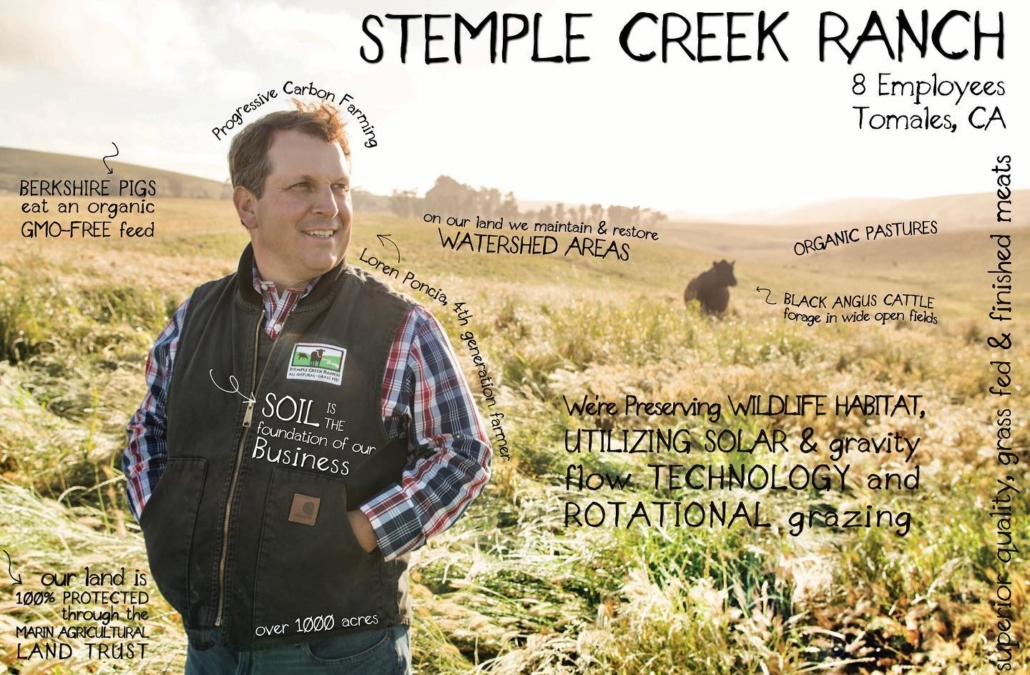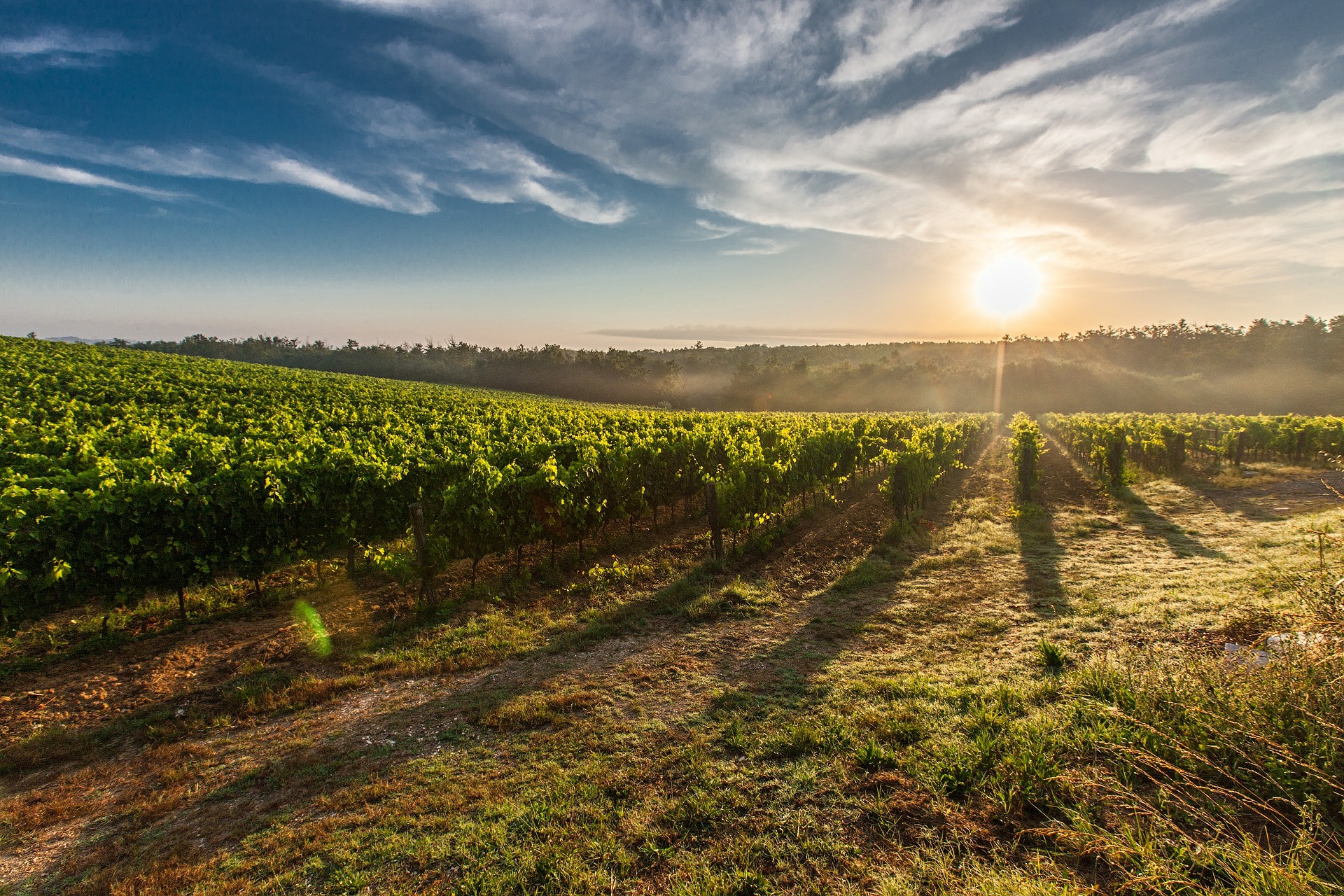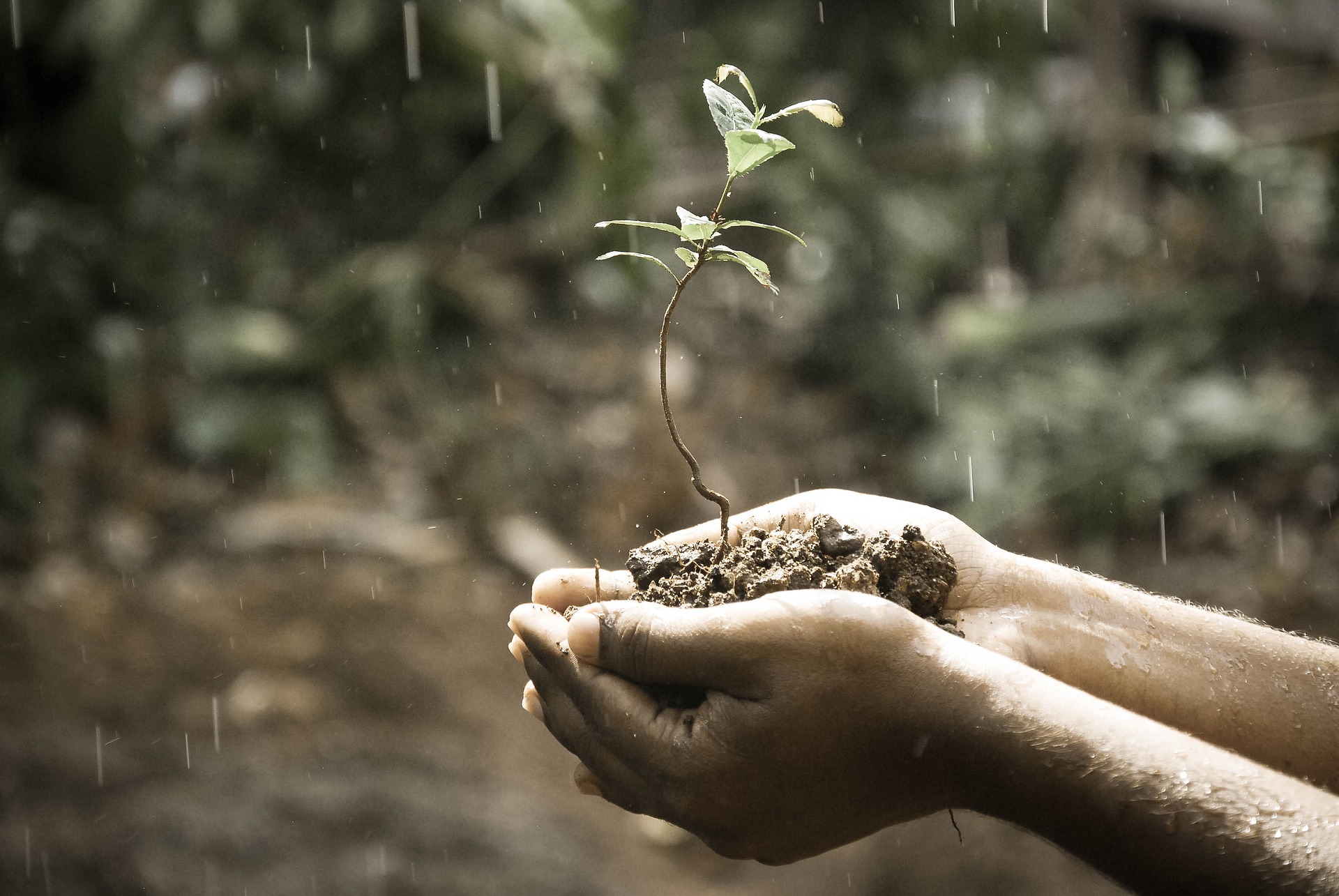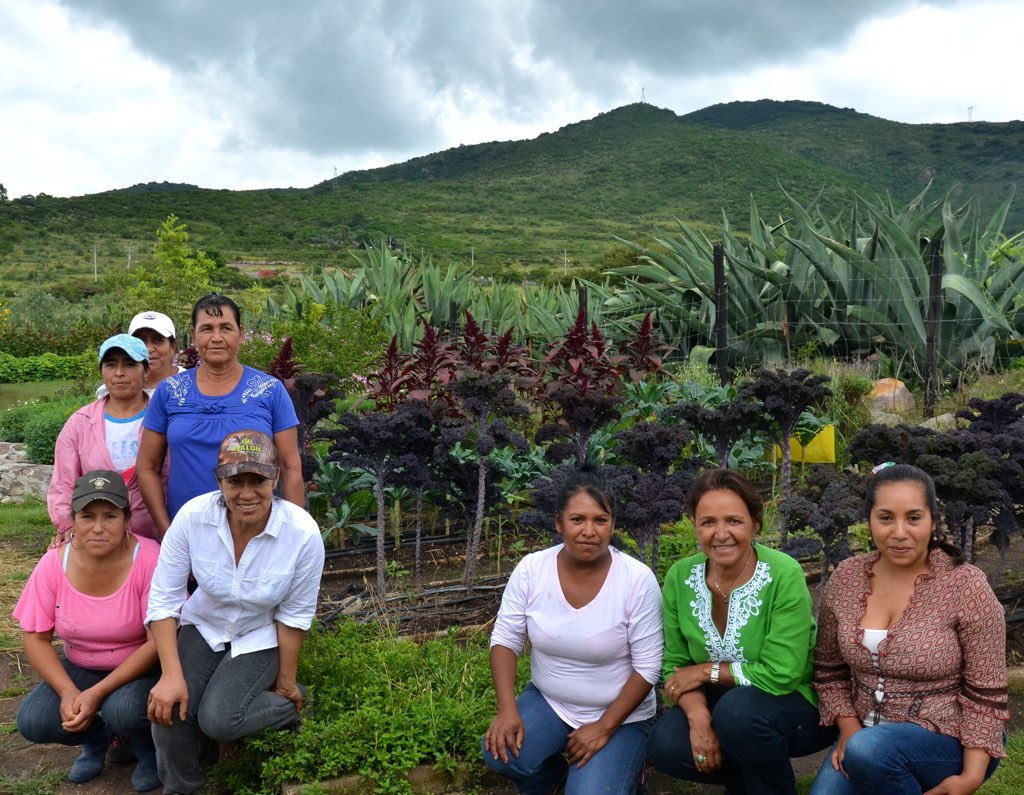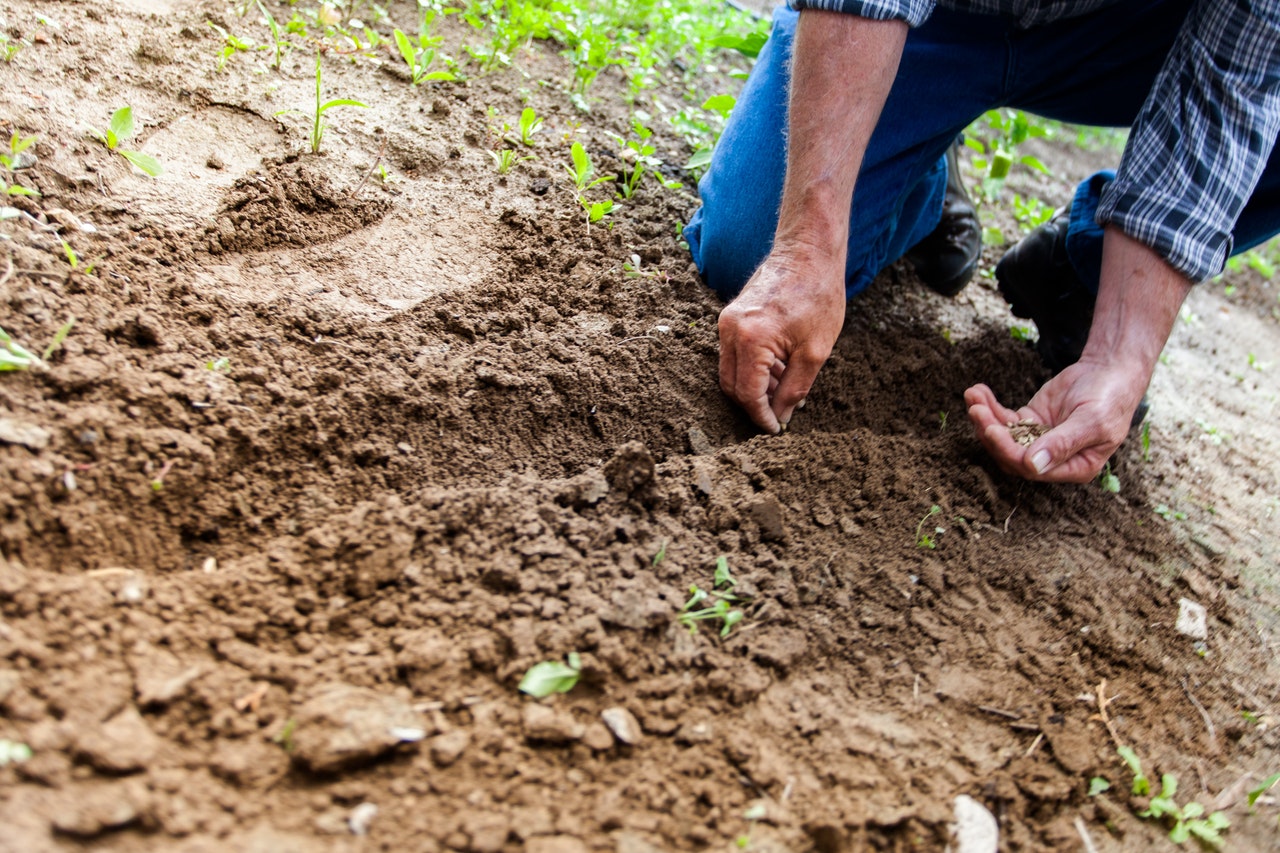This year has been declared the International Year of Soils by the 68th UN General Assembly with the theme “Healthy Soils for a Healthy Life.” I am particularly pleased with the theme because this is a message that we in the organic sector have been spreading for more than 70 years, and at first we were ridiculed. Now there is a huge body of science showing that what we observed in our farming systems is indeed correct.
“Organic farming” became the dominant name in English-speaking countries for farming systems that eschew toxic, synthetic pesticides and fertilizers through J.I. Rodale’s global magazine Organic Farming and Gardening, first published in the United States in the 1940s. Rodale promoted this term based on building soil health by the recycling of organic matter through composts, green manures, mulches and cover crops to increase the levels of soil organic matter (SOM) as one of the primary management techniques.
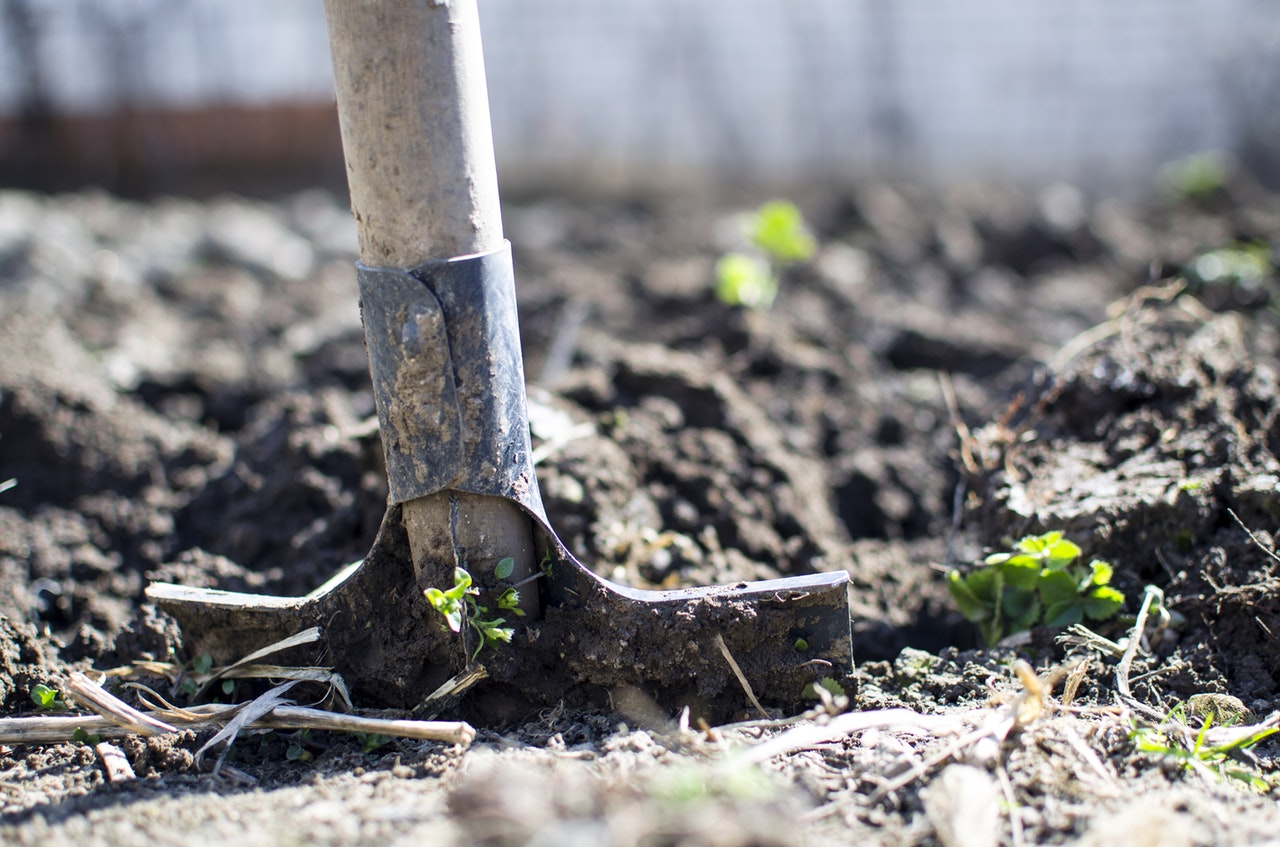
Photo credit: Pexels
Numerous scientific studies show that SOM provides many benefits for building soil health such as improving the number and biodiversity of beneficial microorganisms that provide nutrients for plants, including fixing nitrogen, as well as controlling soilborne plant diseases. The decomposition of plant and animal residues into SOM can provide all the nutrients needed by plants and negate the need for synthetic chemical fertilizers, especially nitrogen fertilizers that are responsible for numerous environmental problems.
SOM improves soil structure so that it is more resistant to erosion and is easier to till, resulting in lower energy use and less greenhouse gas output. Soils with good SOM levels are more efficient at absorbing rainwater and storing it for plants to use in dry periods. Studies show that organic systems get around 30 percent higher yields in periods of drought than conventional systems due to the increase of SOM and its ability to capture and store water for crops.
SOM is composed largely of carbon that is captured as CO2 from the air by plants through photosynthesis. Published, peer-reviewed meta-studies show that organic farming systems are superior to conventional systems in capturing CO2 from the atmosphere (the primary greenhouse gas responsible for climate change) and sequestering it into the ground as SOM.
SOM & CLIMATE CHANGE
Worldwide, agriculture is responsible for between 11 and 30 percent of greenhouse gas emissions, depending on the boundaries and methodologies used to determine its emissions. According to the United Nations Environment Programme, the estimates of global greenhouse gas emissions in 2010 were 50.1 gigatons of carbon dioxide equivalent (Gt CO2e) per year. To keep global mean temperature increases below 2°C compared to preindustrial levels, GHG emissions will have to be reduced to a median level of 44 Gt CO2e in 2020.
This means that the world will have to reduce the current level of emissions by 6.1 Gt CO2e by 2020 and reduce it every subsequent year. According to the latest World Meteorological Organization figures, the levels of GHG pollution in the atmosphere and the oceans are the highest in history and are still increasing.
Keeping the rise in temperature below 2°C will not only involve reducing emissions through energy efficiency, renewable energy and cleaner energy sources; sequestering GHGs already present in the atmosphere will also be necessary to reduce the current levels. Currently most sequestration is based on growing biomass as carbon sinks and capturing it as wood-based products.
Soils are the greatest carbon sink after the oceans. According to Professor Rattan Lal of Ohio State University, there are over 2,700 Gt of carbon stored in soils worldwide. This is considerably more than the combined total of 780 Gt in the atmosphere and the 575 Gt in biomass.
The amount of CO2 in the oceans is already causing problems, particularly for species with calcium exoskeletons such as coral. Scientists are concerned that the increase in acidity caused by higher levels of CO2 is damaging these species and threatens the future of marine ecosystems such as the Great Barrier Reef.
MITIGATION THROUGH ABOVEGROUND BIOMASS
Currently the major push for carbon sequestration is through above-ground biomass, despite that fact that its potential as a carbon sink is significantly less than that of soil. The other issue is the need to take land out of food production to grow trees. There is some potential with agroforestry and trees as shade cover for some cash crops like coffee and cacao, however this will deliver considerably less than research has shown can be sequestered into soils with good agricultural practices.
SEQUESTRATION THROUGH AGRICULTURE
The ability of soils to absorb enough CO2 in order to stabilize current atmospheric CO2levels is a critical issue, and there is a major debate over whether this can be achieved through farming practices. Reviews of conventional farming systems have found that most are losing soil carbon and at best they can only slow the rate of loss. On the other hand, farming systems that recycle organic matter and use crop rotations can increase the levels of soil organic carbon (SOC).
A preliminary study by the Research Institute of Organic Agriculture, Switzerland, published by FAO, collated 45 comparison trials between organic and conventional systems that included 280 data sets. These studies included data from grasslands, arable crops and permanent crops in several continents. A simple analysis of the data shows that on average the organic systems had higher levels of soil carbon sequestration.
Dr. Andreas Gattinger and colleagues wrote, “In soils under organic management, the SOC stocks averaged 37.4 tons C ha-1, in comparison to 26.7 tons C ha-1 under non-organic management.”
This means that the average difference between the two management systems (organic and conventional) was 10.7 tons of C. Using the accepted formula that SOC x 3.67 = CO2, this means an average of more than 39.269 tons of CO2 was sequestered in the organic system than in the conventional system.
The average duration of management of all included studies was 16.7 years. This means that an average of 2,351 kg of CO2 was sequestered per hectare every year in the organic systems compared to the conventional systems.
In a later peer-reviewed meta-analysis, published in PNAS, that used 41 comparison trials and removed the outliers in the data sets in order not to overestimate the data and to obtain a conservative estimate, researchers reported that organic systems sequestered 550 kg C per hectare per year. This equates to 2018.5 kg CO2 per hectare per year.
Based on these figures, the widespread adoption of current organic practices has the potential to sequester around 10 Gt of CO2, which is the range of the emissions gap in 2020 of 8-12 Gt CO2e per year.
Amount of Organic Nitrogen Held in the Soil
1% SOC 2,400 kg of organic N per hectare 1.72% SOM
2% SOC 4,800 kg of organic N per hectare 3.44% SOM
3% SOC 7,200 kg of organic N per hectare 5.16% SOM
4% SOC 9,600 kg of organic N per hectare 6.88% SOM
5% SOC 12,000 kg of organic N per hectare 8.50% SOM
The potential exists for higher levels of CO2 sequestration. All data sets that use averaging have outlying data. These are examples that are significantly higher or significantly lower than the average.
There are several examples of higher levels of carbon sequestration than the averages quoted in the studies above. The Rodale Institute in Pennsylvania has been conducting long-running comparisons of organic and conventional cropping systems for more than 30 years that confirm organic methods are effective at removing CO2 from the atmosphere and fixing it as organic matter in the soil. Tim LaSalle and Paul Hepperly wrote, “In the FST (Rodale Institute farm systems trial) organic plots, carbon was sequestered into the soil at the rate of 875 lbs/ac/year in a crop rotation utilizing raw manure, and at a rate of about 500 lbs/ac/year in a rotation using legume cover crops.
During the 1990s, results from the Compost Utilization Trial (CUT) at Rodale Institute — a 10-year study comparing the use of composts, manures and synthetic chemical fertilizer — show that the use of composted manure with crop rotations in organic systems can result in carbon sequestration of up to 2,000 lbs/ac/year. By contrast, fields under standard tillage relying on chemical fertilizers lost almost 300 pounds of carbon per acre per year.”
Converting these figures into kilograms of CO2 sequestered per hectare using the accepted conversion rate of 1 pound per acre = 1.12085116 kg/ ha and SOC x 3.67= CO2, gives the following results: The FST legume-based organic plots showed that carbon was sequestered into the soil at the rate of about 500 lbs/ac/year. This is equivalent to a sequestration rate of 2,055.2kg of CO2/ha/yr, which is close to the average found in the Gattinger meta-study.
However, other organic systems produced much higher rates of sequestration. The FST manured organic plots showed that carbon was sequestered into the soil at the rate of 875 lbs/ac/year. This is equivalent to a sequestration rate of 3,596.6 kg of CO2/ha/year and if extrapolated globally would sequester 17.5 Gt of CO2.
The CUT showed that carbon was sequestered into the soil at the rate of 2,000 lbs/ac/year. This is equivalent to a sequestration rate of 8,220.8 kg of CO2/ha/year and if extrapolated globally, would sequester 40 Gt of CO2.
A meta-analysis by Eduardo Aguilera et al. published in the peer-reviewed journal, Agriculture, Ecosystems and Environment, of 24 comparison trials in Mediterranean climates between organic systems and non-organic systems without organic supplements found that the organic systems sequestered 970 kg of C/ha/year more than the non-organic systems. This equates to 3559.9 kg of CO2/ha/year. The data came from comparison trials from Mediterranean climates in Europe, the United States and Australia, and if extrapolated globally, would sequester 17.4 Gt of CO2.
The Louis Bolk Institute conducted a study to calculate soil carbon sequestration at SEKEM, the oldest organic farm in Egypt. Their results show that on average SEKEM’s management practices resulted in 900 kg of carbon being stored in the soil per hectare per year in the fields that were 30 years old. Using the accepted formula of SOC x 3.67 = CO2, this means that SEKEM has sequestered 3,303 kg of CO2 per hectare per year for 30 years.
Based on these figures, the adoption of SEKEM’s practices globally has the potential to sequester 16 Gt of CO2, which is around 30 percent of the world’s current GHG emission into soils.
It is not the intention of this paper to use the above types of generic exercises of globally extrapolating data as scientific proof of what can be achieved by scaling up organic systems. These types of very simple analyses are useful for providing a conceptual idea of the considerable potential of organic farming to reduce GHG emissions on a landscape scale. The critical issue here is that urgent peer-reviewed research is needed to understand how and why — and for the skeptics, if — these systems sequester significant levels of CO2 and then look at how to apply the findings for scaling up on a global level in order to achieve GHG mitigation.
GREATER RESILIENCE IN ADVERSE CONDITIONS
According to research by the UNFCCC IPCC Fourth Assessment Report (IPCC 2007) and others, the world is seeing increases in the frequency of extreme weather events such as droughts and heavy rainfall. Even if the world stopped polluting the planet with greenhouse gases tomorrow, it would take many decades to reverse climate change. This means that farmers have to adapt to the increasing intensity and frequency of adverse and extreme weather events.
Published studies show that organic farming systems are more resilient to predicted weather extremes and can produce higher yields than conventional farming systems in such conditions. For instance, the Wisconsin Integrated Cropping Systems Trials found that organic yields were higher in drought years and the same as conventional in normal weather years.
IMPROVED EFFICIENCY OF WATER USE
Research shows that organic systems use water more efficiently due to better soil structure and higher levels of humus and other organic matter compounds. D.W. Lotter and colleagues collected data over 10 years during the Rodale Farm Systems Trial. Their research showed that the organic manure system and organic legume system (LEG) treatments improve the soils’ water-holding capacity, infiltration rate and water capture efficiency. The LEG maize soils averaged 13 percent higher water content than conventional system (CNV) soils at the same crop stage and 7 percent higher than CNV soils in soybean plots. The more porous structure of organically treated soil allows rainwater to quickly penetrate the soil, resulting in less water loss from runoff and higher levels of water capture. This was particularly evident during the two days of torrential downpours from hurricane Floyd in September 1999, when the organic systems captured around double the water as the conventional systems.
Long-term scientific trials conducted by the Research Institute of Organic Agriculture in Switzerland comparing organic, biodynamic and conventional systems had similar results showing that organic systems were more resistant to erosion and better at capturing water.
“We compare the long-term effects (since 1948) of organic and conventional farming on selected properties of the same soil. The organically farmed soil had significantly higher organic matter content, thicker topsoil depth, higher polysaccharide content, lower modulus of rupture and less soil erosion than the conventionally farmed soil. This study indicates that, in the long term, the organic farming system was more effective than the conventional farming system in reducing soil erosion and, therefore, in maintaining soil productivity (Reganold et al. 1987).”
Humus, a key component of SOM, allows for the ability of organic soils to be more stable and to hold more water. This is due to its ability to hold up to 30 times its own weight in water, and being a ‘sticky’ polymer, glues the soil particles together, giving greater resistance to water and wind erosion.
There is a strong relationship between SOM levels and the amount of water that can be stored in the root zone. The table below should be taken as a rule of thumb, rather than as a precise set of measurements. Different soil types will hold different volumes of water when they have the same levels of organic matter due to pore spaces, specific soil density and a range of other variables. Sandy soils generally hold less water than clay soils.
The table above gives an understanding of the potential amount of water that can be captured from rain and stored at the root zone in relation to the percentage of SOM.
There is a large difference in the amount of rainfall that can be captured and stored between the current SOM level in most traditional farms in Asia and Africa and a good organic farm with reasonable SOM levels. This is one of the reasons why organic farms do better in times of low rainfall and drought.
The Rodale Farming Systems Trial showed that the organic systems produced more corn than the conventional system in drought years. The average corn yields during the drought years were 28 to 34 percent higher in the two organic systems. The yields were 6,938 and 7,235 kg per ha in the organic animal and organic legume systems, respectively, compared with 5,333 kg per ha in the conventional system. The researchers attributed the higher yields in the dry years to the ability of the soils on organic farms to better absorb rainfall. This is due to the higher levels of organic carbon in those soils, which makes them more friable and better able to capture and store rainwater which can then be used for crops.
This is very significant information as the majority of the world’s farming systems are rain-fed. The world does not have the resources to irrigate all of the agricultural lands, nor should such a project be undertaken. Improving the efficiency of rain-fed agricultural systems through organic practices is the most efficient, cost-effective, environmentally sustainable and practical solution to ensure reliable food production in the face of increasing weather extremes.
SYNTHETIC NITROGEN FERTILIZERS
One of the main reasons for the differences in soil carbon between organic and conventional systems is that synthetic nitrogen fertilizers degrade soil carbon. Research shows a direct link between the application of synthetic nitrogenous fertilizers and decline in soil carbon.
Volume of Water Retained/ha (to 30 cm) in Relation to Soil Organic Matter (SOM)
0.5% SOM = 80,000 liters
1% SOM = 160,000 liters (common farm level in much of Africa, Asia and parts of Latin America)
2% SOM = 320,000 liters
3% SOM = 480,000 liters
4% SOM = 640,000 liters
5% SOM = 800,000 liters (pre-settlement/farming levels in many countries)
6% SOM = 960,000 liters
This table gives an understanding of the potential amount of water that can be captured from rain and stored at the root zone in relation to the percentage of SOM.
Scientists from the University of Illinois analyzed the results of a 50-year agricultural trial and found that synthetic nitrogen fertilizer resulted in all the carbon residues from the crop disappearing as well as an average loss of around 10,000 kg of carbon per hectare per year. This is around 36,700 kg of CO2 per hectare on top of the many thousands of kilograms of crop residue that is converted into CO2 every year.
Researchers found that the higher the application of synthetic nitrogen fertilizer the greater the amount of soil carbon lost as CO2. This is one of the major reasons why most conventional agricultural systems have a decline in soil carbon while most organic systems increase soil carbon.
PLANT-AVAILABLE NITROGEN LEVELS
One of the main concerns about organic agriculture is how to get sufficient plant-available nitrogen without using synthetic nitrogen fertilizers such as urea.
SOM, particularly the humus fractions, tend to have a carbon nitrogen ratio of 9:1 to 11:1. As the carbon levels increase, the amount of soil nitrogen increases in order to maintain the carbon-nitrogen ratios. Adding organic matter into the soil to increase carbon, results in the nitrogen levels increasing.
Much of this soil nitrogen is fixed by free-living soil microorganisms such as azobacters and cyanobacterias. The use of DNA sequencing is revealing that cohorts of numerous thousands of species of free-living microorganisms are involved in fixing nitrogen from the air into plant available forms. There are many studies that show that there is a strong relationship between higher levels of SOM and higher levels of soil biological activity.
This biological activity includes free-living nitrogen-fixers, and they turn the atmospheric nitrogen, the gas that makes up 78 percent of the air, into the forms that are needed by plants. They do this at no cost and are a major source of plant-available nitrogen that is continuously overlooked in most agronomy texts.
New research has found a new group of nitrogen-fixing organisms called endophytic microorganisms. These microbes can colonize the roots of numerous plant species including rice, grain crops and sugar cane.
SOIL CARBON, NITROGEN RATIOS
It is important to get an understanding of the potential for how much nitrogen can be stored in SOM for the crop to use. SOM contains nitrogen expressed in a Carbon to Nitrogen Ratio. This is usually in ratios from 11:1 to 9:1; however, there can be further variations. The only way to firmly establish the ratio for any soil is to do a soil test and measure the amounts.
For the sake of explaining the amount of organic nitrogen in the soil we will use a ratio of 10:1 to make the calculations easier.
The amount of carbon in SOM is expressed as SOC and is usually measured as the number of grams Formulated of carbon per kilogram of soil. Most texts will express this as a percentage of the soil to a certain depth. There is an accepted approximation ratio for the amount of soil organic carbon in soil organic matter: SOC × 1.72 = SOM.
The issue of working out the amount of SOC as a percentage of the soil by weight is complex as the specific density of the soil has to be factored in because some types of soils are denser and therefore heavier than other soils. This will change the weight of carbon as a percentage of the soil.
To make these concepts readily understandable we will use an average estimation developed by Dr. Christine Jones, one of Australia’s leading soil scientists and soil carbon specialists. According to Dr. Jones: “… a 1 percent increase in organic carbon in the top 20 cm of soil represents a 24 t/ha (24,000 kg) increase in SOC …”
This means that a soil with 1 percent SOC would contain 24,000 kg of carbon per hectare. With a 10:1 carbon to nitrogen ratio this soil would contain 2,400 kg of organic nitrogen per hectare in the top 20 centimeters, the primary root zone.
The conventional dogma around nitrogen is that it can only be used by plants if it is in the form of nitrate or ammonium and that organic nitrogen is mostly not available to the crop until it has been converted into these two forms of N.
There are hundreds of peer-reviewed scientific studies that show that this assumption is incorrect and that in natural systems plants take up nitrogen in numerous organic forms such as amino acids, amino acid precursors and DNA.
The fact is that the significant proportion of the organic nitrogen in the soil is readily available to the crop. The key to get an adequate level of N is to increase SOM levels rather than adding synthetic nitrogen fertilizers.
Given that synthetic nitrogen destroys organic matter, the use of these fertilizers should be avoided as they lock farmers into a perpetual dependence on these costly inputs once the organic matter levels have been run down and most of the organic nitrogen forms in the soil have been depleted. Farmers should be encouraged to obtain all their nitrogen from organic sources such as composts, manures, green manures and legumes and build up their organic matter levels.
André Leu is international director of Regeneration International. He is a longtime farmer in Australia and past president of the International Federation of Organic Agricultural Movements. He is the author of The Myths of Safe Pesticides and Poisoning Our Children, published by Acres U.S.A.
Reposted with permission from Eco-Farming Daily
